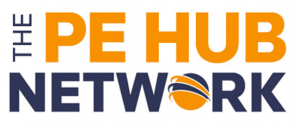Structuring the IPO PMO for Exit Success | PE Hub
Those who’ve been down the IPO road before get it: preparedness and project management are paramount.

By, Gary Appelbaum, Managing Director & Kim Thi Tran, Vice President, Accordion
“By failing to prepare, you are preparing to fail.” – Benjamin Franklin
Ben’s words of wisdom can be applied more than a couple centuries later to IPO readiness.
For sponsors and portfolio companies, the IPO pathway is paved with promises of return on investment but plagued by scrutiny and unexpected uplift. Those who’ve been down the IPO road before get it: preparedness and project management are paramount.
Enter the IPO PMO (Project Management Office): Sophisticated sponsors and seasoned IPO’ers know they can’t live without one. (Note to portfolio company management: if you encounter sponsors or others who say they can go without a PMO, run.)
An IPO PMO is the nucleus of a process that involves multiple cross-functional workstreams, various consulting and service-provider experts, sponsors and management. The PMO takes the lead to coordinate a multi-disciplined process, ensuring deadline alignment/compliance and generally mitigating risk (or escalating interdependent issues where there are credible flags). It does this while minimizing business disruptions so that business (the very business that propelled the company to IPO in the first place) can continue uninterrupted.
The question to sponsors taking a company public isn’t: Do you have a PMO? It’s: Do you have the right PMO? Because, like our founding fathers, they’re not all created equal.
From our experience working with sponsors and companies going public, we’ve identified two critical aspects companies routinely underestimate when structuring their IPO PMO. (And, they fall into the ill-prepared trap that good ol’ Ben Franklin warned us about.) In that spirit, we call them Benjamin’s Bewares:
Yes, you need experts – lots of them. And, you need those experts to have IPO experience – lots of it. You need legal counsel who specializes in the process of taking companies public. You need external auditors with experience in public company reporting (and how it differs from a private company environment). You need HR/compensation experts with knowledge of SEC reporting requirements and peer companies. You need a valuation firm and underwriters. You need trained tax, treasury, IT and internal control/Sarbanes-Oxley support. You need a virtual Ferris wheel of technically competent resources across all sorts of inter- and intra-company functions.
But you also need independent operational acumen to make the Ferris wheel run. And that’s where too many PMOs fall down. Companies conflate legal or auditing expertise with the ability to operate a PMO – one that can navigate the intricacies of working within cross-functional responsibilities. This independence does more than just add operational fuel. It allows the PMO to act as a neutral architect, unburdened by the demands of any functional workstream(s) within the IPO process.
Companies undertaking an IPO regularly underestimate the magnitude of the effort and the added strain on already stretched resources. They also frequently overestimate their ability to meet set timelines. PMOs run by independent operators understand timeline realities. They can not only validate the set schedule, they can track progress to ensure targets are then met. And, they do it all while making sure the many complex puzzle pieces fit together.
The need for neutral, efficient and timely coordination in the IPO process should turn any quiet calls for an operational-led PMO into full-throated demands for them.
Most companies understand that an IPO brings with it additional reporting demands and enhanced scrutiny. But even those companies that expect additional accounting requirements are often ill-prepared for the heavy toll of the inevitable extra IPO-related work and documentation, often requiring more staff and resources. We call it the hidden uplift, and it usually comes in two forms..First, there may be a difference in the historical documentation required (and available) when going from private to public. While management is prepared to make the necessary current and forward-looking adjustments, requests for prior-period information may (surprisingly) surface, threatening to derail the IPO timeline.
Second, there’s the undressed-executive factor. Executives may be uncomfortable with the compensatory and personal exposure that going public requires. It’s the sponsor’s job to help bring them along on that journey, but it’s the PMO’s job to protect confidential information until it’s ready for public release. This demands a PMO with the competency to run two simultaneous workstreams – one confidential and one uber-confidential.
PMOS that are improperly structured or inadequately staffed to deal with these hidden uplifts – and the many atypical and unanticipated uplifts that arise along the way – will find themselves ill-prepared for the realities of the IPO process and its timeline.
When we think IPOs, we think about the Benjamins: the valuation, the listing price, the sponsor ROI. But, in planning the path to IPO, sponsors and portfolio companies must also heed Ben’s preparedness advice. They can do so by creating an operationally sophisticated, independently led PMO capable of navigating the IPO journey.
Those who’ve been down the IPO road before get it: preparedness and project management are paramount.